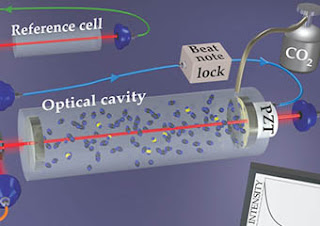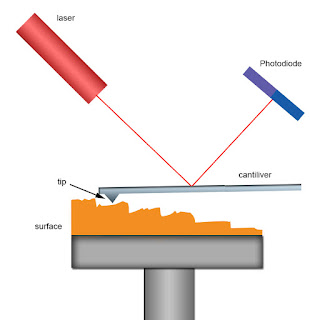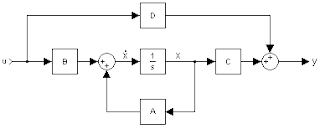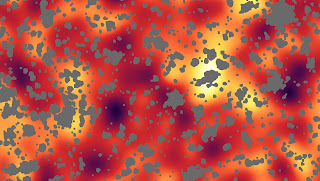 |
| Image Source: Infograph.Venngage.com, actually NOT Voltaire. Correction here |
Topics: Commentary, Diversity in Science, Politics, Women in Science
[An oft-repeated post heading] To remind what exactly authoritarianism is and why it's so destructive, I give this Eric Fromm ("Escape From Freedom") primer:
Authoritarianism: Fromm characterizes the authoritarian personality as containing a sadist element and a masochist element. The authoritarian wishes to gain control over other people in a bid to impose some kind of order on the world, they also wish to submit to the control of some superior force which may come in the guise of a person or an abstract idea.
Destructiveness: Although this bears a similarity to sadism, Fromm argues that the sadist wishes to gain control over something. A destructive personality wishes to destroy something it cannot bring under its control.
Conformity: This process is seen when people unconsciously incorporate the normative beliefs and thought processes of their society and experience them as their own. This allows them to avoid genuine free thinking, which is likely to provoke anxiety.
From the typical troupe of "God punished us for ___" response (the same after 9-11, Haiti and other perceived foibles) and the xenophobic attacks on a religion practiced by 1.6 billion people - some of them my relatives - the reactions to the Pulse nightclub shooting were myriad. Some were somber, resolved and respectful.
I never imagined a presidential candidate taking credit, the same who intelligence officials (from his OWN party) say he's fanning the flames of extremism. He somehow glossed over 50 Americans died and 53 are critically injured in now America's worst gun tragedy. Apparently for him, Twitter gloat-fodder.
"A destructive personality wishes to destroy something it cannot bring under its control."
A lot of change has happened in the last 7.5 years: the first African American president (1/44, 44: 1, 2.3% probability of "other"), the death of Osama Bin Laden; over seventy months of private sector job growth, a DOW from ~ 7,900 to 16,000; Unemployment at < 5% (literally digging out from a trough); The Affordable Care Act; The Paris Accords on Climate Change; Same-Sex marriage. A plethora of change.
Authoritarianism is the only thing that explains the canned statement I hear often: "Obama has been a disaster." Any other president with just his domestic accomplishments would be proposed for inclusion on Mount Rushmore. It occurs to me (my internal mental rejoinder) that the real "disaster" is narrative. African Americans must make a mess of things; BE a disaster despite facts to the opposite. "Change" is anathema to authoritarian personalities. Technology - yes; society - no. Roles defined for gender, race and sex must be adhered to and obeyed, transmitted from on high by a strongman or an ideal. Or, I can only assume someone's sensitive feelings will be hurt.
"A destructive personality wishes to destroy something it cannot bring under its control."
There was quite a firestorm about the remake of Roots, most notably from the bravura thespian Cordozar Calvin Broadus, Jr. AKA "Snoop Dog" whose cinema accomplishments heretofore haven't been exactly "uplifting" to the culture. True: we should not JUST tell slave stories, but false: we shouldn't forget them either. We were reluctant immigrants, the result of a kidnapping on the Orwellian-named "Good Ship Jesus." Our story is intricate in this country's "exceptionalism," our free labor making the US a global economic power. Cotton to oil; slavery to outsourced labor not much has changed other than technology. I look forward to seeing if he's on the credits as producer of the coming NASA biopic "Hidden Figures," an uplifting tale about African American women mathematicians in the 1960's. (Here's your chance, Broadus.)
The Jewish community often say "never forget" regarding their holocaust, and neither should we ours. Africans were the first to stage uprisings to authoritarianism (slavery...whips...chains...children-sold-off) examples to use a recent term from the House Speaker: "textbook" authoritarianism. Beyond those whips and chains, we've contributed to the growth and prosperity of this nation and world, as have all other groups of our citizenry.
The violence that we see has always been America. Disparate groups from African Americans, Asian Americans, Hispanic/Latino Americans, Italian Americans, Irish Americans, Jewish Americans, LGBTQ Americans, Native Americans; Women: all who have reached for equal rights (and in the case of women most recently, equal PAY) have always endured a violent backlash, be it political or actual. There's a need for the authoritarian to "go backwards" to a halcyon, Utopian time that upon clear examination of historical facts never existed for the aforementioned disparate groups.
But they really aren't that different. All were and are Americans by the 14th Amendment. All had and have rights to life, liberty and the pursuit of happiness in The Constitution.
The shooter - of Afghan descent, but born in New York - was described by his EX-wife as violent and emotionally disturbed. His father - in an attempt to place his son's crime in context - stated he was offended by a "gay couple kissing"; it was not due to his religion. This explanation as "context" is tepid at best. Emmett Till's apparent sin was whistling...
"A destructive personality wishes to destroy something it cannot bring under its control."
So, it is not a matter of going backwards or minority groups, LGBTQ and Women just "keeping quiet" and everything will simmer down. That is the textbook description of a hostage scenario, not citizenship.
"A destructive personality wishes to destroy something it cannot bring under its control."
Rhetoric - either written or spoken - always proceeds violence. We will soon have a choice of the country we aspire to be...or perhaps unmasking [for] ourselves for all time, revealing beyond the illusion of what we think of ourselves, to what we've always been.












